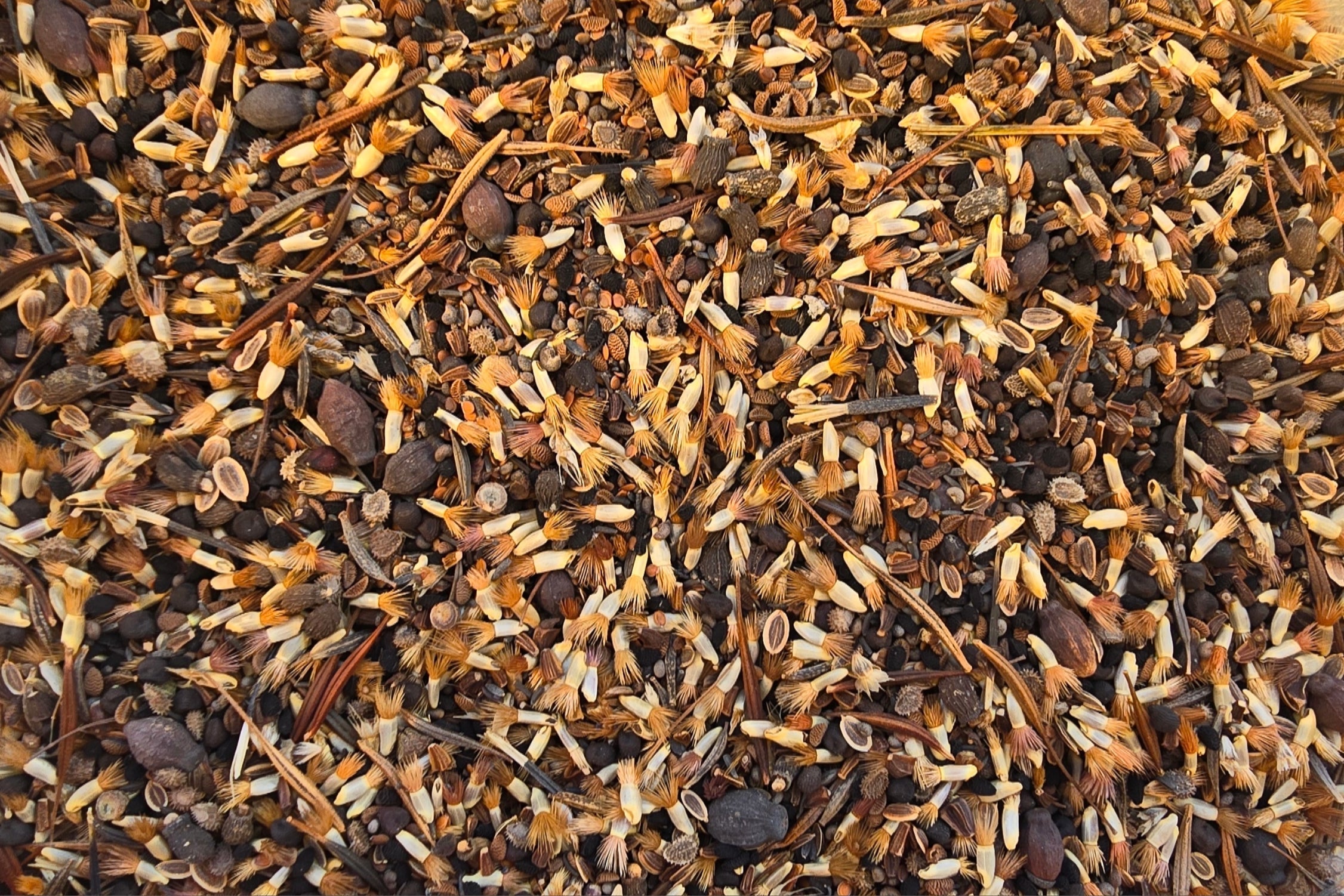
How To Grow Wildflower Seed Mixes
Choosing the best spot to grow your wildflower seed mix
Before you even think about growing wildflower meadows, the first step is choosing where to plant them. After all, the spot you choose should determine the type of seed mix you should use and if it will thrive in such terrains, whether that's in shady areas, an embankment or the sunniest patch in your yard. Our expert tip? Avoid established lawns or weeds so your blooms won't have to compete for nutrients.
Wildflower seed mixes can grow almost anywhere, as long the area has good drainage and a minimum of four hours of sunlight daily. The best time to plant them?
- Wildflower seed mixes typically thrive when planted in Autumn or Spring.
- You can get away with planting seeds in Winter if you live in arid, tropical or subtropical regions.
Once you've chosen your spot for growing wildflower seeds, the next step is planting them, and here's our 6-step wildflower planting guide to help you do just that.
Measure your garden to determine the quantity of seeds you need. As a rule of thumb, settle for 2-3 grams per square metre for good locations. If you're planting wildflower seeds in fairly dry or difficult terrains, you need 3-4 grams of seeds.
Remember, too many seeds increase competition for growth and minimise the number of species that bloom while too little will result in patches and sparse areas.
2. Preparing your soil for sowing
It's simple: get your soil ready for planting correctly and your blooms will make you proud. Therefore, preparation is not a step you want to skip or rush.
To give your wildflower seeds the best start, you’ll need to clear the area of weeds, grass, and debris before planting, and there are several ways to do this.
- Cover the area with cardboard, newspaper or tarps for a few weeks to naturally smother weeds before planting.
- Pull weeds out by hand and rake up grass and debris. Although it's labour-intensive, the process is quite effective.
- Lay clear plastic over the soil for 4–6 weeks in sunny weather to naturally kill weeds and their seeds underneath.
- For larger spaces, you may want to invest in a sod cutter and rototiller to remove weeds, grass and debris from the planting site.
Remember, raking, pulling weeds and tilling can expose buried weed seeds to sunlight on the surface, resulting in growth, so you may want to use organic weed killers and herbicides for effective weed removal.
Once done, consider adding nutrients such as mushroom compost or mature cow manure to your soil to create the perfect environment for growing wildflowers.
3. Sowing your wildflower seed mix
Wildflower seeds are very fine and delicate; therefore, you would want to use a Grade 3 vermiculite as your career to keep your seeds warm, moist and well-primed for planting. Plus, it is non-toxic and environmentally friendly.
Mixing ratio for best results
- Use 20g of vermiculite for every 2g of seeds.
- If your seedbed exceeds 50m2, add 10% more vermiculite.
- No vermiculite? Use fine-washed sand instead.
Mixing and moistening
- Combine seeds and vermiculite in a container and mix well.
- Lightly moisten the mix to help seeds stick together for even spreading.
Remember, you should never combine different wildflower seed mixes as they may contain species that naturally compete for nutrients.
Use the crosshatch method to spread.
To plant your mix, simply spread half of it from north to south and the other half from east to west to ensure even coverage. Once done, press seeds into the soil for good contact and ensure you don’t cover them. For the best results
- Use your feet for small areas.
- Lay down cardboard or plywood and walk over it for medium areas.
- Use a seed or weighted lawn roller for larger areas.
4. Protecting your seedlings
Since your wildflower seeds are not covered by soil, you want to protect them from being pecked on by birds and critters or being trampled on by other animals. Our expert tip? Use sugarcane mulch to protect them (and keep them moist too)!
Just don’t spread it too thickly as it will prevent sunlight from reaching your seeds and stop them from germinating.
5. Watering
Regular watering keeps your wildflower seeds mix happy throughout germination and early growth stages. Therefore, you want to keep the soil moist. Consider using an irrigation system to make life easier or simply use the traditional hose or watering can twice a day (or more in hot and dry weather).
6. Aftercare
In 3-4 weeks, you should start seeing your wildflower seed mix sprouting. At this stage, the growing wildflowers may look more like weeds. So, try not to do any uprooting unless you’re sure they are weeds. Pro tip? Use Google Lens or a plant identification app to be certain.
If you're sure it's a weed, we recommend regular weeding by hand-pulling or using chemical herbicides. You should also keep your soil well-populated with nutrients and water.
How long will it take for my wildflower seed mixes to grow?
That all depends on your soil temperature, moisture and how well you prepare your site for planting. Wildflower seed mixes thrive in well-watered soils and specific conditions based on the seed mix, while less-than-ideal environments may see them blooming a little later.
If you're planting in Autumn:
- Seedlings stay dormant through winter and start germinating in spring as the soil warms up.
- In arid, tropical, or subtropical climates, some varieties may bloom during winter.
If you're planting in Spring:
- Seedlings emerge in 1-3 weeks as the soil warms.
- Flowers will start to bloom later in the season.
Need help with your garden?
If you’re looking to create your own gorgeous wildflower garden, then our team at Meadow Flowers is here to help! We have a wide range of seeds available to purchase or get in touch with our experienced gardeners, who will be happy to answer any questions you might have.
© Meadow Flowers Australia 2023
Share

